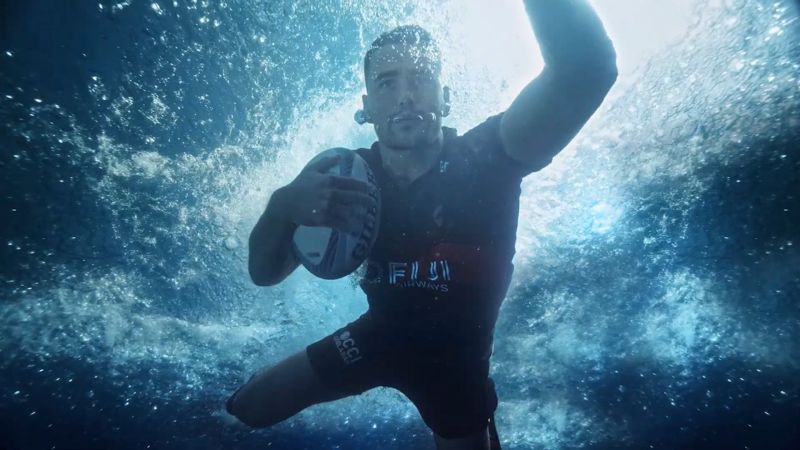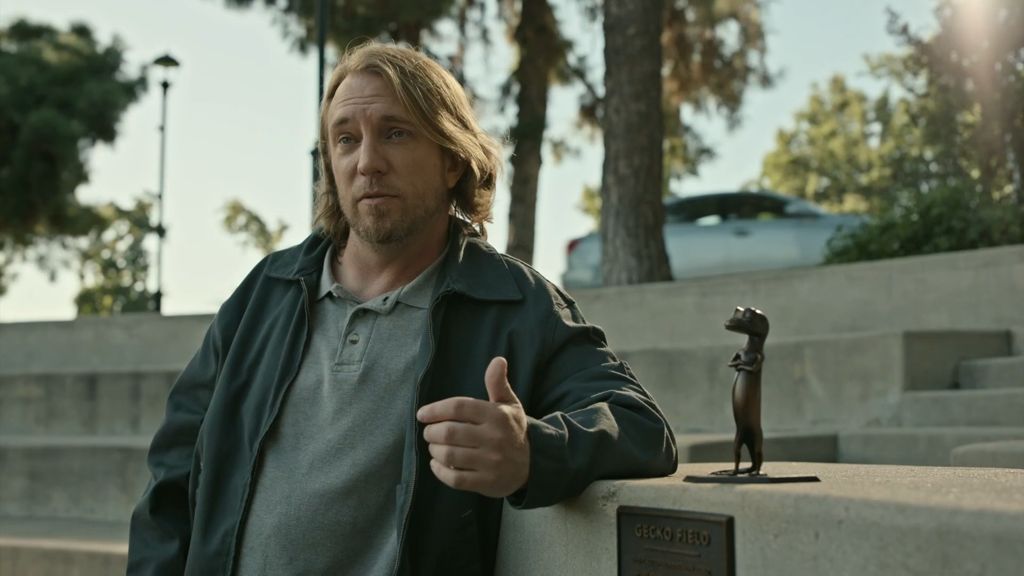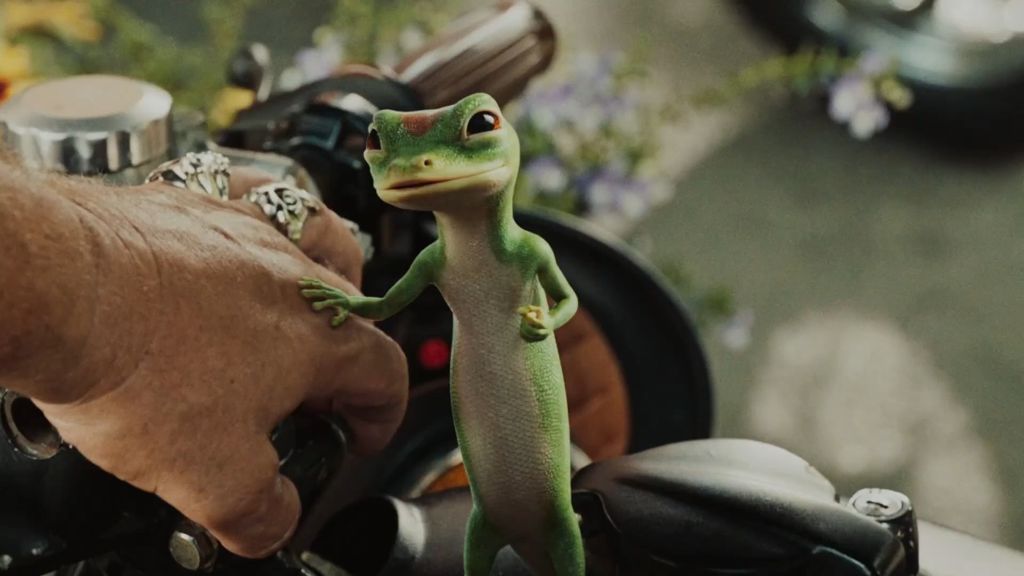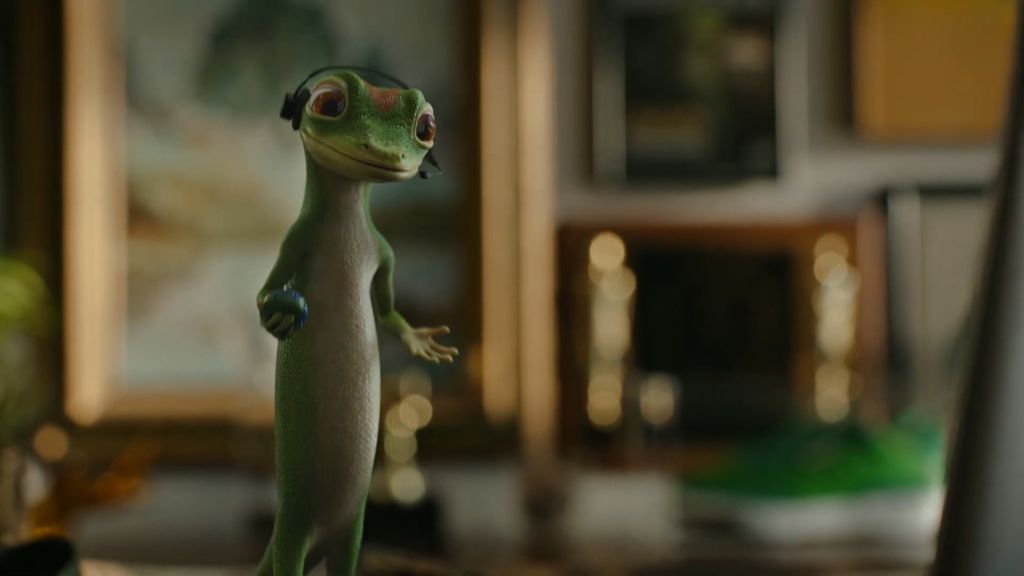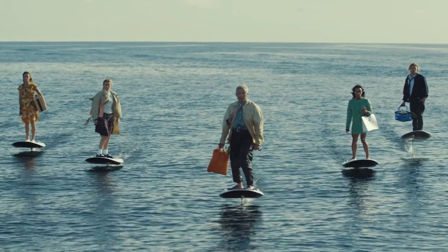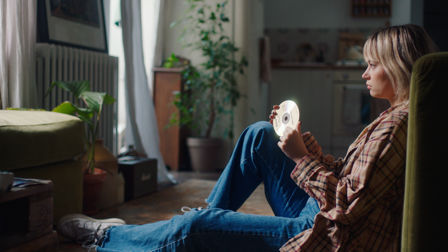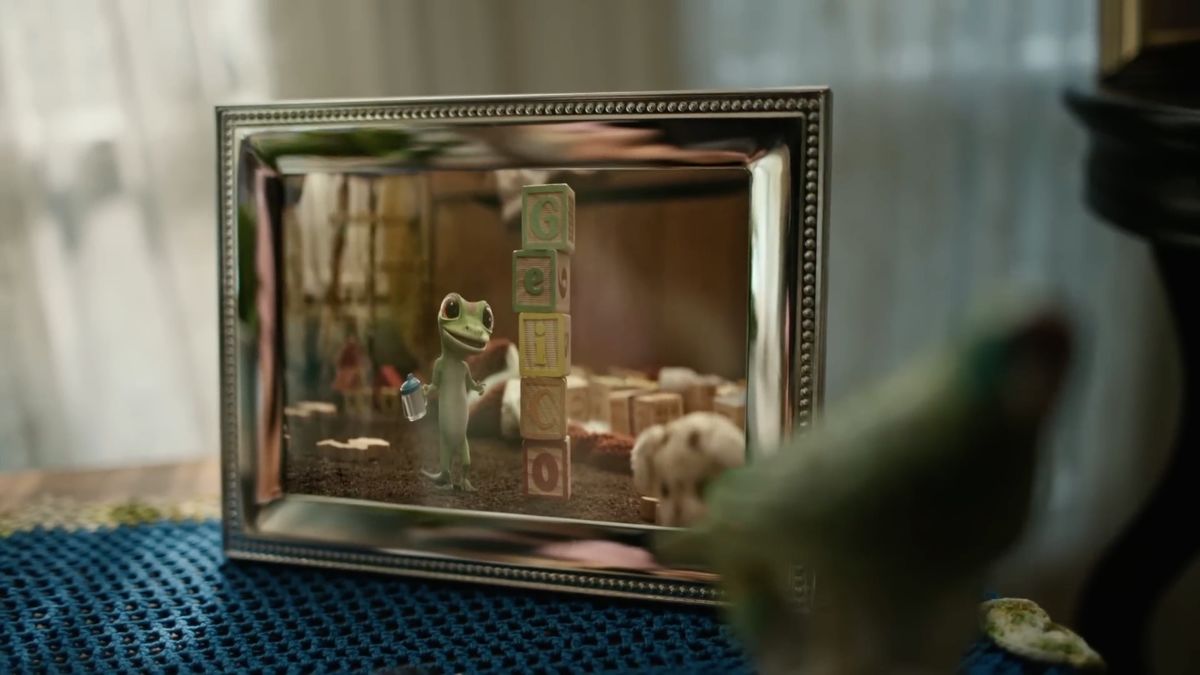How WW7 basked in the Legend of the Lizard
As part of GEICO's Super Bowl activity, The Martin Agency tasked WW7's David Shafei with creating a mockumentary that answered one of the great brand mascot enigmas: where did the GEICO Gecko come from? Here, Shafei shares with shots the delicate steps it takes to unmask an icon.
When did you become involved with the GEICO project? Was it always intended to be an extended documentary, or did that develop during the process?
This project came to me through the ordinary bidding process. However, as soon as I read the scripts, met the creatives, and understood the bigger concept, I knew it was something I had to be part of.
If I remember correctly, it was initially scoped for four spots, with a teaser and a long-form piece. At the time, we thought the long-form would be two to four minutes, combining all the best stuff from the four spots. But when we started shooting, we all suspected that the long-form piece had the potential to grow into something much bigger.
What were the initial steps? Which aspects did you need to establish first?
The main thing for me was to first identify the conflicts. Not necessarily that the Gecko had enemies, but I wanted to figure out some dynamics between the Gecko and his friends and family that could lead to more comedy.
When we started shooting, we all suspected that the long-form piece had the potential to grow into something much bigger.
The Martin Agency brilliantly used the caveman as the foil, the one character that could go after the Gecko. I tried to find those dynamics in his friends and family, making them a bit complicated; Ilove mixed with jealousy, ownership, or competition. Things that could give our actors more ways into the scripts and their own improvisation.
Credits
powered by
- Agency The Martin Agency/Richmond
- Production Company World War Seven
- Director David Shafei
-
-
Unlock full credits and more with a Source + shots membership.
Credits
powered by
- Agency The Martin Agency/Richmond
- Production Company World War Seven
- Director David Shafei
- Managing Partner Josh Ferrazzano
- Executive Producer Sloane Hayes Skala
- Editorial Company Cabin Editing Company
- Executive Post Producer Hope Duhaime
- Associate Producer Noelle Lucien
- Editor Nick Divers
- Cutting Assist Chris Kelley
- VFX Framestore/New York
- Senior VFX Producer PJ Stegall
- VFX Associate Creative Director William Frazier
- CG Lead Jim Vidal
- CG Lead Romain Faure
- 2D Lead Zavier Mojica
- VFX Editor John DiMare
- VFX Editor Eugen Bekafigo
- Color Company 3/Los Angeles
- Senior Color Producer Matt Moran
- Senior Colorist Sean Coleman
- Music/Sound Walker
- Audio Managing Director Sara Matarazzo
- Executive Audio Producer Dottie Scharr
- Senior Audio Producer Neha Ewell
- Associate Audio Producer Samantha Zirin
- Music Editor Garrett Chabot
- Audio Mixer Jacob Brody
- Senior Director, Creative & Content Gary Aurand
- Chief Creative Officer Danny Robinson
- VP, Creative & Content Michelle Moscone
- Executive Creative Director Ashley Marshall
- Director, Marketing Creative Brand Tom Perlozzo
- Group Creative Director Neel Williams
- DP Polly Morgan / (DP)
- Creative Director Ryan Raab
- Creative Director/ Copywriter Graham Unterberger
- Production Designer Melisa Myers
- Creative Director/ Art Director Dustin Dodd
- Art Director Isaiah Timmons
- Copywriter McKay Fritz
- Senior Post Producer Grace Hammerstein
- Executive Producer Heather Collier
- Senior Producer Maggie Weishaar
- Senior Producer Liza Miller
- Junior Producer Zavi Harman
- Associate Creative Director Anne Love Field
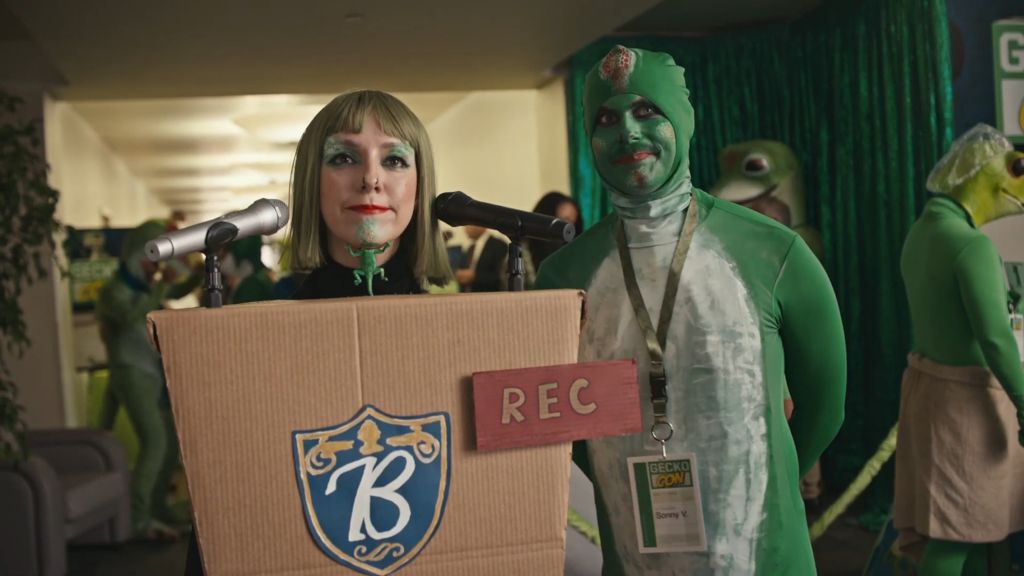
Credits
powered by
- Agency The Martin Agency/Richmond
- Production Company World War Seven
- Director David Shafei
- Managing Partner Josh Ferrazzano
- Executive Producer Sloane Hayes Skala
- Editorial Company Cabin Editing Company
- Executive Post Producer Hope Duhaime
- Associate Producer Noelle Lucien
- Editor Nick Divers
- Cutting Assist Chris Kelley
- VFX Framestore/New York
- Senior VFX Producer PJ Stegall
- VFX Associate Creative Director William Frazier
- CG Lead Jim Vidal
- CG Lead Romain Faure
- 2D Lead Zavier Mojica
- VFX Editor John DiMare
- VFX Editor Eugen Bekafigo
- Color Company 3/Los Angeles
- Senior Color Producer Matt Moran
- Senior Colorist Sean Coleman
- Music/Sound Walker
- Audio Managing Director Sara Matarazzo
- Executive Audio Producer Dottie Scharr
- Senior Audio Producer Neha Ewell
- Associate Audio Producer Samantha Zirin
- Music Editor Garrett Chabot
- Audio Mixer Jacob Brody
- Senior Director, Creative & Content Gary Aurand
- Chief Creative Officer Danny Robinson
- VP, Creative & Content Michelle Moscone
- Executive Creative Director Ashley Marshall
- Director, Marketing Creative Brand Tom Perlozzo
- Group Creative Director Neel Williams
- DP Polly Morgan / (DP)
- Creative Director Ryan Raab
- Creative Director/ Copywriter Graham Unterberger
- Production Designer Melisa Myers
- Creative Director/ Art Director Dustin Dodd
- Art Director Isaiah Timmons
- Copywriter McKay Fritz
- Senior Post Producer Grace Hammerstein
- Executive Producer Heather Collier
- Senior Producer Maggie Weishaar
- Senior Producer Liza Miller
- Junior Producer Zavi Harman
- Associate Creative Director Anne Love Field
How did you film the 'documentary'?
When shooting a mockumentary, I like to be method in approach. Sounds silly, but it works. We don’t want to just do a caricature of a documentary; we want to go at it as if it’s real. When thinking about the approach, it’s essential to do it as a documentary crew would—that means a leaner production. We worked with the amazing Polly Morgan and tried to embrace a more stripped-down shooting style.
There were moments, because of schedule needs, where we required more support and gear than an average Netflix documentary, but I always tried to stay true to this stripped-down way of thinking. That was not the case for production design - Melissa Meyers and her team had to craft a world of Gecko memorabilia and history and then weave it into our sets while trying to make the overall world feel authentic.
As for the writing, Dustin Dodd, Graham Utenberger, and Ryan Raab did a brilliant job. They brought so much to the table that we built even further together. With my producer, Michael Mitchell, we designed a production where we could capture as many of those ideas on film as possible.
We were so lucky to have skilled improvisers who could nail their scripted lines and then push it all further.
It was a complicated little puzzle, and every day was packed with setups and tiny moments, especially with what we asked each actor to do. We went to set with more than just lines for the actors; we had character worksheets (which Graham and Dustin crushed) to give them enough character backstory to make the lines and their stories their own.
Then, on set, I would improvise with the actors, in character as this documentarian, always trying to ground the tone in reality. Even my 1st AD, Jason Lombardo, got into it, bringing some actors to the interview chair as if they actually were that person. The actors took their lines and ran with them.
We were so lucky to have skilled improvisers who could nail their scripted lines and then push it all further. This goes back to the idea of their relationships with the Gecko and how each relationship helped or hindered their own lives. We also spiraled down these little absurd wormholes—gecko burrows, if you will. For instance, we have a Gecko superfan at GeckCon, Molly. It wasn’t enough that they loved the Gecko; we wanted to have emotional repercussions with her stepmother, Tammy. That’s the best kind of madness to me.
What were your influences on the style and content of the film?
The main two references for me were the Arnold Netflix documentary and almost everything Christopher Guest has ever done. Arnold for the style and emotional grandiosity, and Guest for his characters’ intense commitment to their points of view and general absurdity.
GEICO – Legend Of The Lizard - His Rise
GEICO – Legends Of The Lizard - His Secret
GEICO – Legends Of The Lizard - His Influence
GEICO – Legends Of The Lizard - His Drive
How was the story developed?
The Martin team began the process with an incredible book of scripts, themes, and ideas. They really love the Gecko and know him. Then, together with production, casting, and the art department, we expanded the world, added some new stuff, and opened up other aspects.
It was one of the most joyful commercial processes I’ve ever been a part of. Geico had so much confidence and trust in Martin and production, and themselves, really. They never shied away from pushing the work. It was awesome.
What was the most challenging aspect of the filming and editing process?
The most challenging thing? Huh. Well, it was a lot of work, for sure. But it was the best kind of work. The puzzle of how we would fit it all into our shoot time was definitely not easy. Thank you again, Michael Mitchell and Jason Lombardo.
The main two references for me were the Arnold Netflix documentary and almost everything Christopher Guest has ever done.
The edit was equally challenging. We shot 17 hours of footage, 19 if you include the Gecko Commercial archive. Nick Divers at Cabin, with the help of Chris Kelly, cut the campaign, carving the long form out of all of it. I’ve worked with Nick now on three branded mockumentary projects. The most recent was for the Oreo Doomsday Vault. He was my first call when I started working on the treatment. Nick is a brilliant comedy editor. But as good as he is at making comedy work, he’s just as gifted at finding the heart of characters. It’s the understanding that even something as silly as a doc about a lizard can still have a bit of soul. This campaign wouldn’t have been half as good without him.
Credits
powered by
- Agency The Martin Agency/Richmond
- Production Company World War Seven
- Director David Shafei
-
-
Unlock full credits and more with a Source + shots membership.
Credits
powered by
- Agency The Martin Agency/Richmond
- Production Company World War Seven
- Director David Shafei
- DP Polly Morgan / (DP)
- Production Designer Melisa Myers
- Executive Producer Sloane Hayes Skala
- Line Producer Michael Mitchell
- Editorial Company Cabin Editing Company
- Editor Andrew Ratzlaff
- Head of Production Lisa Barnable
- Executive Producer Hope Duhaime
- Editor/Cutting Assistant Chris Kelley
- Editor Assist Lawrence Ng
- Edit Assist Bryan Williams
- VFX / Post / Finishing SuperJoy (In-House at The Martin Agency/Richmond)
- Head of Production The Martin Agency/Richmond
- Senior Producer Katherine Leatherwood
- Flame Artist Paul Widerholt
- Senior Producer Chris Frendo
- Associate Director, Post Production Katherine Leatherwood
- Head of Production Kerry Ayers
- Record/Mix Overcoast Music & Sound
- Sound Engineer Jonathan Waller
- Audio Producer Travis Tucker
- Telecine Company 3/Los Angeles
- Senior Colorist Sean Coleman
- Senior Producer Matt Moran
- Music Company Walker
- Managing Director Sara Matarazzo
- Executive Producer Dottie Scharr
- Senior Director, Creative & Content Gary Aurand
- Chief Creative Officer Danny Robinson
- VP, Creative & Content Michelle Moscone
- Executive Creative Director Ashley Marshall
- Director, Marketing Creative Brand Tom Perlozzo
- Group Creative Director Neel Williams
- Creative Director Ryan Raab
- Creative Director/ Copywriter Graham Unterberger
- Creative Director/ Art Director Dustin Dodd
- Audio Mixer Charlie Slemaker
- Executive Producer Heather Collier
- Sr. Content Producer Maggie Weishaar
- Sr. Content Producer Liza Miller
- Jr. Producer Zavi Harman
- Senior Producer Grace Hammerstein
- Senior Edit Producer Marianna Terenzio
- Flame Artist Chris Hagen
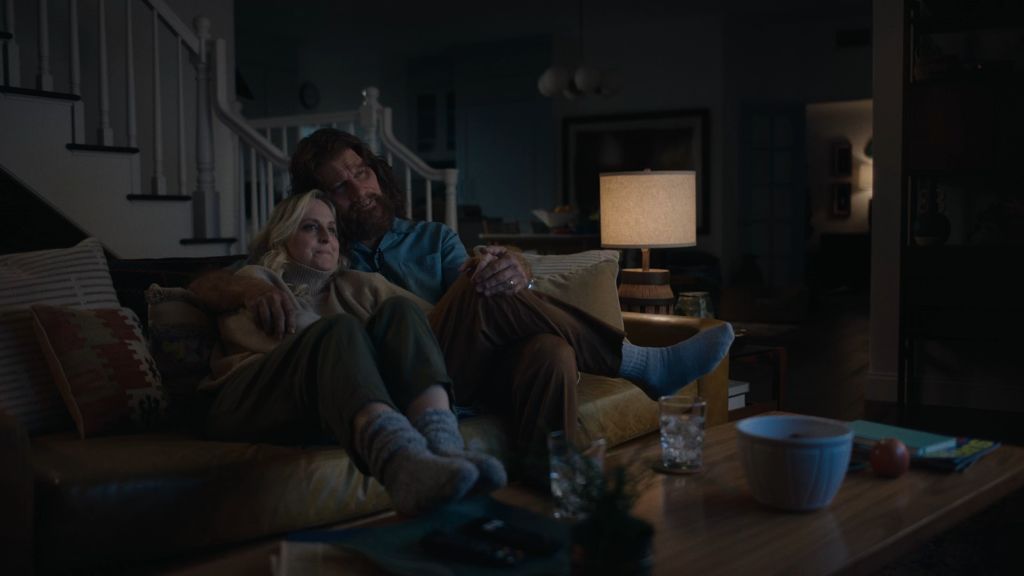
Credits
powered by
- Agency The Martin Agency/Richmond
- Production Company World War Seven
- Director David Shafei
- DP Polly Morgan / (DP)
- Production Designer Melisa Myers
- Executive Producer Sloane Hayes Skala
- Line Producer Michael Mitchell
- Editorial Company Cabin Editing Company
- Editor Andrew Ratzlaff
- Head of Production Lisa Barnable
- Executive Producer Hope Duhaime
- Editor/Cutting Assistant Chris Kelley
- Editor Assist Lawrence Ng
- Edit Assist Bryan Williams
- VFX / Post / Finishing SuperJoy (In-House at The Martin Agency/Richmond)
- Head of Production The Martin Agency/Richmond
- Senior Producer Katherine Leatherwood
- Flame Artist Paul Widerholt
- Senior Producer Chris Frendo
- Associate Director, Post Production Katherine Leatherwood
- Head of Production Kerry Ayers
- Record/Mix Overcoast Music & Sound
- Sound Engineer Jonathan Waller
- Audio Producer Travis Tucker
- Telecine Company 3/Los Angeles
- Senior Colorist Sean Coleman
- Senior Producer Matt Moran
- Music Company Walker
- Managing Director Sara Matarazzo
- Executive Producer Dottie Scharr
- Senior Director, Creative & Content Gary Aurand
- Chief Creative Officer Danny Robinson
- VP, Creative & Content Michelle Moscone
- Executive Creative Director Ashley Marshall
- Director, Marketing Creative Brand Tom Perlozzo
- Group Creative Director Neel Williams
- Creative Director Ryan Raab
- Creative Director/ Copywriter Graham Unterberger
- Creative Director/ Art Director Dustin Dodd
- Audio Mixer Charlie Slemaker
- Executive Producer Heather Collier
- Sr. Content Producer Maggie Weishaar
- Sr. Content Producer Liza Miller
- Jr. Producer Zavi Harman
- Senior Producer Grace Hammerstein
- Senior Edit Producer Marianna Terenzio
- Flame Artist Chris Hagen
The film is replete with hidden references for fans of the brand’s advertising. How crucial was it to include these, and which are your personal favourites?
Oh, it was absolutely crucial, and the Martin and Geico teams were all about it. With decades of Geico Gecko commercials, there was no shortage of potential Easter eggs.
With decades of Geico Gecko commercials, there was no shortage of potential Easter eggs.
My favourite super specific reference is when we see the Gecko working late at his desk: in the background, for a second, is an office cleaner vacuuming. We dressed that person up to match the uniform and vacuum of one of the cleaners from the Geico Unskippable campaign. That’s how detailed we got with layering in references to past work.
The film has been released online, and teasers were broadcast during the Super Bowl. What do you believe will encourage audiences to watch the longer film, and what are your hopes for their reaction?
I hope that the tone of the TV spots and the teaser - the characters’ earnestness - makes people curious enough to take the next step to YouTube.
And I really hope that it makes them laugh. Like, not a little smirk, but an actual audible laugh.
Having documented the Gecko, which mascot would you like to focus on next?
If I’m being honest, I’ve always wanted to know what makes the Jolly Green Giant tick.
)
